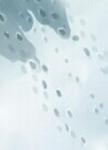版权所有:内蒙古大学图书馆 技术提供:维普资讯• 智图
内蒙古自治区呼和浩特市赛罕区大学西街235号 邮编: 010021

作者机构:AT&T BELL LABS MURRAY HILL NJ 07974 USA
出 版 物:《PROCEEDINGS OF THE IEEE》 (电气与电子工程师学会会报)
年 卷 期:1994年第82卷第2期
页 面:252-268页
核心收录:
主 题:2D to 2D correspondence 2D to 3D correspondence 3D motion determination 3D object navigation 3D to 3D correspondence algebraic geometry algorithms camera calibration computational geometry corners curved lines feature correspondences feature extraction homotopy theory imaging geometry motion estimation noise sensitivity path planning points position control positioning problem formulation projective geometry review reviews rigid object structure determination robust algorithms straight lines
摘 要:We present a review of algorithms and their performance for determining three-dimensional (3D) motion and structure of rigid objects when their corresponding features are known at different times or are viewed by different cameras. Three categories of problems are considered, depending upon whether the features are two-(2D) or three-dimensional (3D) and the type of correspondence: a) 3D to 3D (i.e., locations of corresponding features in 3D space are known at two different times), b) 2D to 3D (i.e., locations of features in 3D space and their projection on the camera plane are known), and c) 2D to 2D (i.e., projections of features on the camera plane are known at two different times). Features considered include points, straight lines, curved lines, and corners. Emphasis is on problem formulation, efficient algorithms for solution, existence and uniqueness of solutions, and sensitivity of solutions to noise in the observed data. Algorithms described have been used in a variety of applications. Some of these are: a) positioning and navigating 3D objects in a 3D world, b) camera calibration, i.e., determining location and orientation of a camera by observing 3D features whose location is known, c) estimating motion and structure of moving objects relative to a camera. We mention some of the mathematical techniques borrowed from algebraic geometry, projective geometry, and homotopy theory that are required to solve these problems, list unsolved problems, and give some directions for future research.